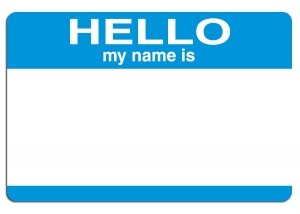Solving Problems in 12 Simple Steps
Posted by aonenetworks On September 26, 2013 The ultimate goal of problem solving is to overcome obstacles and find a solution to resolve an issue. This is a mental process of discovering, analyzing, and use of a little bit of creativity. The psychological how-to’s of problem solving suggest we need to “identify, define, strategize, organize, and evaluate.” Â Although, there is often a disconnect when moving these ominous words to action. Here are twelve different approaches to starting your problem solving quest.
The ultimate goal of problem solving is to overcome obstacles and find a solution to resolve an issue. This is a mental process of discovering, analyzing, and use of a little bit of creativity. The psychological how-to’s of problem solving suggest we need to “identify, define, strategize, organize, and evaluate.” Â Although, there is often a disconnect when moving these ominous words to action. Here are twelve different approaches to starting your problem solving quest.
- Implement controversy. Argue for and against your opinion on the issue.
- Use inductive reasoning. Draw generalized conclusions based on your experience and observation.
- Avoid logical fallacies. Be able to discern a valid argument from a false one.
- Look for what could go wrong. Use a little foresight to anticipate problems that could arise from your solution. The indicators to watch for are often quiet and may come from your intuition.
- Give credence to the guidelines. They were setup for a reason, mostly. Give them consideration to save some rework later.
- Means-End Analysis. Outline the means that are needed to reach the desired end.
- Have a very clear understanding of the problem. Be sure to form questions and ask what, who, how, and which.
- Use innovation and creativity. There is not one definitive explanation, keep in mind that problem solving is a continuous cycle of improvement.
- Implement the Deming Cycle for controlled problem solving. The Plan-Do-Check-Act cycle is effective in managing change, ensuring that ideas are tested before committing to full implementation. But may not be appropriate when the situation is more immediate.
- The Soft Systems Methodology is useful when looking at issues involving people management issues. This process is helpful in gainer a fuller understanding of the issue.
- An appreciative inquiry can help to solve problems by looking at what is going right. Recognize the value of the things and people surrounding the issue, then explore further to open new possibilities.
- Using the straw man approach is to build it up, knock it down and then create a solid and final solution. When using this method, be sure everyone understands the process. Otherwise, it will appear that you are only yielding “half-baked ideas.”
The process of problem solving is best explained by Albert Einstein: “If I were given one hour to save the planet, I would spend 59 minutes defining the problem and one minute resolving it.”





![500px-Windows_logo_-_2012.svg[1]](https://aonenetworks.com/wp-content/uploads/2018/03/500px-Windows_logo_-_2012.svg1_.png)